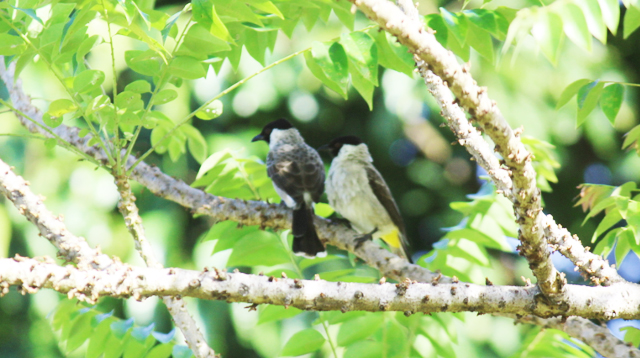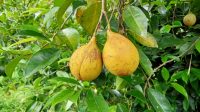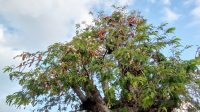WITHIN the lush tropical landscapes of Southeast Asia, including Bali Island, a small yet charismatic bird captivates the hearts of birdwatchers and nature enthusiasts alike—the Yellow-Vented Bulbul (Pycnonotus goiavier).
Known for its vibrant plumage, melodic songs, and adaptable nature, this charming songbird has carved a niche for itself in the diverse ecosystems it calls home.
Physical Charms
The Yellow-Vented Bulbul is a study in natural beauty. Sporting a predominantly olive-brown plumage, its defining feature is the striking yellow patch beneath its tail, which adds a burst of color to its appearance. The contrast between the subtle earth tones and the vivid yellow makes it an aesthetically pleasing bird to observe. Its slender, slightly curved beak and expressive eyes further contribute to its overall charm.
Melodious Tunes
One of the Yellow-Vented Bulbul’s most enchanting qualities is its melodious and varied song. From dawn until dusk, these songbirds fill the air with a repertoire of whistles, trills, and melodious notes. Their vocalizations serve multiple purposes, from marking territory to attracting mates. The distinctive tunes of the Yellow-Vented Bulbul contribute to the vibrant symphony of sounds that characterizes the tropical environments it inhabits.
This bird like to nest near the home and seems familiar with human mobility as if they did not care about human presence around them. They may sing a song on the window, garden or even in the backyard.
Adaptability and Habitat
One of the secrets to the Yellow-Vented Bulbul’s success is its adaptability. This species thrives in a range of habitats, from dense rainforests and mangrove swamps to urban gardens and agricultural areas. This adaptability has enabled the bird to establish itself in various ecosystems across its native range, which includes countries like Malaysia, Indonesia, and parts of southern China.
The Yellow-Vented Bulbul is primarily frugivorous, with fruits making up a significant portion of its diet. However, it is an opportunistic feeder, also consuming insects, nectar, and small invertebrates. This adaptability in dietary preferences contributes to the bird’s ability to thrive in diverse environments.
Nesting and Reproduction
During the breeding season, these bulbuls construct cup-shaped nests in trees or shrubs, using a combination of twigs, leaves, and other plant materials. The female typically lays a clutch of two to three eggs, and both parents participate in the incubation and care of the chicks. The Yellow-Vented Bulbul’s dedication to family life showcases its nurturing instincts.
Conservation Status and Threats
While the Yellow-Vented Bulbul is currently listed as a species of Least Concern on the International Union for Conservation of Nature (IUCN) Red List, it faces potential threats from habitat loss due to deforestation and urbanization. Conservation efforts are crucial to maintaining the delicate balance that allows these charming birds to thrive across their natural range.
The Yellow-Vented Bulbul stands as a testament to nature’s ability to adapt and thrive in a variety of environments. Its charming appearance, delightful songs, and adaptability make it a beloved resident of the tropical landscapes it calls home. As we appreciate the vibrancy it brings to our surroundings, it is essential to recognize the importance of preserving the habitats that allow this charming songbird to enchant us with its presence.











